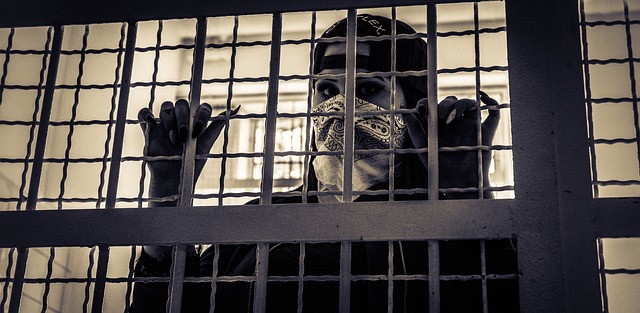Pedestrians have rights, especially in urban areas with high foot traffic, including protection from unreasonable searches and seizures during DUI (Drunk Driving Under Influence) enforcement. Officers must have reasonable suspicion or probable cause to stop and question pedestrians, and they can refuse requests unless there's evidence of unlawful activity. Privacy concerns arise due to increased police presence and surveillance technologies like facial recognition and license plate readers. Balancing public safety and privacy is crucial; robust data protection measures, clear guidelines for data collection, and regular audits are needed. Transparent communication, real-time data sharing, and digitizing records can enhance accountability without compromising individual privacy. Community engagement and education also play a vital role in creating safer streets while upholding pedestrians' rights.
In recent years, the focus on public safety has increasingly shifted towards ensuring pedestrians’ rights and safe streets. This article delves into a multifaceted discussion, exploring key aspects that underpin pedestrian safety, especially in relation to DUI (Drunk Driving Under Influence) enforcement. We analyze the impact of stringent DUI laws on civilians, addressing privacy concerns stemming from surveillance techniques. Balancing public safety and individual liberties is crucial; thus, we advocate for enhancing transparency in law enforcement practices. Furthermore, practical strategies are proposed to strengthen pedestrians’ rights, considering the ongoing debate around Privacy Concerns in DUI Enforcement.
- Understanding Pedestrians' Rights: An Overview
- The Impact of DUI Enforcement on Civilians
- Privacy Concerns Arising from Surveillance Techniques
- Balancing Public Safety and Individual Liberties
- Enhancing Transparency in Law Enforcement Practices
- Strategies for Strengthening Pedestrians' Rights
Understanding Pedestrians' Rights: An Overview

Pedestrians have rights that must be respected and upheld, especially in urban areas where foot traffic is high. Understanding these rights is crucial for ensuring safe streets and fostering a sense of security among all road users, including pedestrians, drivers, and law enforcement officers. In many jurisdictions, laws protect pedestrians’ freedom from unreasonable searches and seizures, which also extends to privacy concerns during DUI (Drunk Driving Under Influence) enforcement.
Privacy in DUI stops is a delicate balance between public safety and individual liberties. Officers must have reasonable suspicion or probable cause before they can stop and question a pedestrian, just as they would with a vehicle. This means that simply looking at someone walking down the street or crossing a road isn’t enough to justify an inquiry. Pedestrians have the right to refuse certain requests, such as consenting to search their person or belongings, unless there is sufficient evidence of unlawful activity. Additionally, any information gathered during such interactions should be handled with discretion, ensuring that privacy concerns are addressed and respected in the enforcement process.
The Impact of DUI Enforcement on Civilians

In the pursuit of enhancing road safety, DUI (Drunk Driving Under Influence) enforcement has been a cornerstone of many legal systems worldwide. However, the implications extend far beyond deterring impaired driving. The very nature of DUI patrols raises significant privacy concerns for civilians. With increased police presence and advanced technology, individuals may feel their personal space is invaded, creating an atmosphere of unease rather than security. Every driver or pedestrian could inadvertently become a target for scrutiny, leading to a broader fear of surveillance in public spaces.
Moreover, the potential for bias and abuse during DUI stops cannot be overlooked. Without strict protocols and oversight, these interactions can result in discriminatory practices, disproportionately affecting marginalized communities. The balance between ensuring public safety and respecting privacy rights is delicate; thus, it’s crucial that any enforcement strategies are transparent, fairly implemented, and regularly audited to address any arising privacy concerns.
Privacy Concerns Arising from Surveillance Techniques

In the pursuit of safer streets for pedestrians, surveillance techniques have increasingly been employed by law enforcement. While these methods aim to deter and prevent crimes, they also raise significant privacy concerns among citizens. Technologies such as facial recognition, license plate readers, and body-worn cameras can collect vast amounts of personal data, including sensitive biometric information. The use of these tools in DUI (Driving Under the Influence) enforcement, for instance, raises questions about how and where this data is stored, who has access to it, and if there are adequate safeguards in place to protect individuals from potential misuse or unauthorized access.
Privacy advocates argue that extensive surveillance can lead to a chilling effect on civil liberties, as people may feel their actions are constantly monitored. Moreover, there’s a risk of false positives in automated systems, which could result in mistaken identity and infringe upon the privacy rights of innocent individuals. As such, it is essential to balance public safety with robust data protection measures, ensuring that surveillance techniques are used responsibly and transparently to address Privacy Concerns in DUI Enforcement while upholding the rights of pedestrians and citizens alike.
Balancing Public Safety and Individual Liberties

In any discussion about creating safe streets for pedestrians, balancing public safety and individual liberties is a delicate act. While ensuring the security of citizens from potential hazards like drunk driving is essential, it must be done without infringing upon personal privacy rights. This tightrope walk becomes even more challenging in DUI (Drunk Driving) enforcement, where privacy concerns often arise. Officers require access to information such as location and behavior data to identify and apprehend offenders, but this necessitates a careful approach to protect against misuse or overreach.
The onus lies in implementing robust legal frameworks that permit effective DUI prevention and prosecution while also ensuring transparency and accountability. This includes clear guidelines for data collection, strict protocols for handling personal information, and regular audits to safeguard against privacy breaches. Enhancing public awareness about their rights and the legitimate use of their data can further contribute to a harmonious balance between keeping streets safe and preserving citizens’ privacy.
Enhancing Transparency in Law Enforcement Practices

In the pursuit of safe streets for pedestrians, enhancing transparency in law enforcement practices is paramount, especially regarding privacy concerns in DUI (Driving Under the Influence) enforcement. The current legal landscape often leaves room for mistrust between communities and police, with sensitive data collection methods raising red flags about individual privacy rights. Clear communication about what information is gathered, how it’s used, and by whom can go a long way in building public trust.
Transparency measures should include easily accessible guidelines on DUI stops, searches, and seizures, ensuring citizens understand their rights and the rationale behind police actions. Additionally, technology that facilitates real-time data sharing between law enforcement and relevant agencies can improve accountability while respecting privacy. This includes the use of digital systems for tracking breath test results, license suspensions, and other relevant records, making it easier to verify compliance without compromising individual privacy.
Strategies for Strengthening Pedestrians' Rights

To strengthen pedestrians’ rights and ensure safe streets, several strategies can be implemented. One key approach is enhancing privacy concerns in DUI (Driving Under the Influence) enforcement. This involves ensuring that law enforcement respects the privacy of individuals during stops, searches, and seizures. Measures like requiring probable cause for stop decisions, limiting the scope of searches, and strictly adhering to procedures for documenting interactions can help protect pedestrians’ rights.
Additionally, community engagement and education play a crucial role. Promoting awareness about pedestrian safety through workshops, campaigns, and partnerships with local organizations fosters a culture of mutual respect between pedestrians and law enforcement. Encouraging open dialogue helps address concerns, builds trust, and ultimately contributes to safer streets for everyone.
In conclusion, ensuring safe streets for pedestrians requires a delicate balance between public safety and individual liberties. As we’ve explored, understanding pedestrians’ rights is crucial, especially with issues like drunk driving and surveillance techniques raising privacy concerns. By enhancing transparency in law enforcement practices and adopting strategies to strengthen pedestrians’ rights, communities can foster an environment that respects both the rule of law and the freedom of all citizens. This inclusive approach is vital for creating a safer, more livable space for everyone, addressing not just DUI enforcement but also broader privacy issues in today’s digital age.






